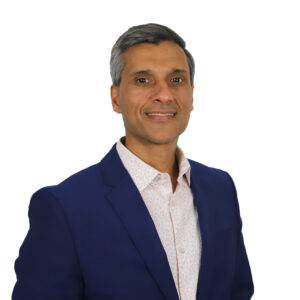
As a long-time nursing home medical director and co-founder of a digital startup for the healthcare space, Arif Nazir’s outlook on nursing home technology adoption might surprise some observers.
Many nursing homes are moving too quickly to implement evolving technologies before their worth is fully known, cautions Nazir, who was recently appointed consultant chief medical officer at American Senior Communities.

“If you bring premature technology like remote patient monitoring, they actually add a significant burden for the staff,” Nazir, MD, told McKnight’s Long-Term Care News Thursday. “I’m not saying we shouldn’t invest in it. It’s just not where it needs to be yet. … Right now, the data points create a lot of noise and they can create a lot of extra work.”
For nursing homes already doing all the right things, smart technologies can be icing on the cake. But in most facilities, there needs to be more focus on first baking the cake itself, he says.
That attention to basic ingredients, in this case those needed for creating high-quality patient care, is the focus of Nazir’s work with ASC, as well as Signature Health, where he has been chief medical officer since 2016.
Just over a year ago, Nazir joined BrightSpring Health as chief medical officer of its primary care programs. As a consultant to two major providers, and possibly more in the future, his role is to bolster the recruitment and strategic use of engaged medical directors and other advanced practice clinicians.
For this former president of AMDA – The Society of Post acute and Long-Term Care Medicine, this is the likely solution to many of this sector’s challenges and a way to seize on the medical complexity and demographic opportunities coming in years ahead.
Coordinating key clinicians for quality
That’s one reason he was eager to join the team at ASC, which is Indiana’s largest nursing home operator.
“We find American Senior Communities is one of those progressive organizations that actually is aiming to do the right things,” Nazir says. “Most importantly, they actually fully understand the importance of how quality is going to play a role in the value-based structures of the future, actually of the past, present and the future.”
They’ve already adopted certain tenets that demonstrate they see the importance of medical directors and physicians working in partnership with nurse practitioners and prescribers, Nazir says. But coordination among those parties has always been a challenge for providers, especially in buildings where few clinicians are routinely on site.
“Our biggest problem is that we just have not invested in and taken the time to ask how the teams really should be working together,” he adds. “That is what American Senior was looking for: innovation in teamwork and partnership to improve quality of care.”
Nazir’s work with the ASC leadership team, which is shifting as CEO Donna Kelsey moves toward retirement, is beginning with refining hiring efforts and building a structure that each facility’s team can follow. Much of that will include setting clear expectations of the medical director, and giving him or her clear guidance on when to intervene in facility-wide programs or insist on and lead change.
While he’s frequently visiting partner facilities under the BrightSpring initiative, Nazir’s goal is to build strong systems that on-the-ground teams can adhere to and perfect over time.
He’s a champion for such standards, which he believes would be helpful nationally. He referenced a recent JAMA Network Open study that found the share of nursing homes working with advanced care practitioners, specifically SNFists, had soared from 13.5% of facilities in 2013 to 52.9% in 2018. Despite that fast growth, the presence of those professionals hadn’t reduced hospital readmission rates, a statistic often used to measure quality.
It’s incumbent on nursing home leaders to make sure those clinicians are being empowered and authorized to do more than just their required rounding — but also to be clear on what their physicians can help them achieve.
“We have given them a whole lot to do, which creates vagueness in their role,” Nazir says. “We need to know: What do physician leaders in American [nursing homes] do? What kind of structure do they need to work in? How can they partner better day in day out with the staff and improve their workflow, rather than, sometimes, inadvertently becoming a barrier to workflows? I think to me, that is going to be the most exciting thing for me to work on,” Nazir says.
The big 3 subject areas
A mandate for Nazir’s teams will be developing core elements for medical directors to lead the way on; those could include improvement initiatives or compliance areas such as rehospitalizations, polypharmacy management or infection control.
“If our advanced clinicians and our medical directors would just give us great focus on these three elements and be a great partner to us on these things, we would be light-years ahead of where we are in quality,” he said.
Of course, rolling out any significant change in how clinicians operate in nursing homes will depend on who fills such roles. Nazir’s first step with new partners is helping them find “A” players, those with the attitude and skill set needed for long-term care’s special populations. He says he looks first for candidates with caring, compassion and humility.
“We can teach and learn everything else, but if you’re not going to be compassionate about the work you do, if these patients are just numbers for you, they’re just revenue, this building is just a chore for you … that’s the kind of person who will never be a successful physician leader or will never be able to drive outcomes.”



